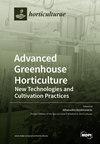Genetic Mapping for Leaf Shape and Leaf Size in Non-Heading Chinese Cabbage by a RIL Population
IF 3.1
3区 农林科学
Q1 HORTICULTURE
引用次数: 0
Abstract
Leaves are the predominant photosynthetic and edible organs in non-heading Chinese cabbage (Brassica campestris ssp. chinensis, NHCC), contributing significantly to yield, appearance, and desirability to consumers. However, the genetic basis of leaf shape and size in non-heading Chinese cabbage remains unclear. In this study, we developed a RIL population using ‘Maertou’, with slender leaves and narrow petioles, and ‘Suzhouqing’, with oval leaves and wide petioles, to construct a genetic linkage map and detect QTLs. To obtain stable and reliable QTLs, the 11 leaf-related traits, including the leaf length, leaf width, and fresh weight of the lamina and petiole and the thickness of petiole was observed on two locations—while the leaf shape, petiole shape, index of lamina/petiole length, and index of petiole fresh weight were calculated based on 7 leaf-related traits. QTL mapping illustrated that a total of 27 QTLs for leaf-related traits were preliminarily detected. The candidate genes were annotated and several genes involved in leaf development and leaf shape appeared in the overlapping regions of multiple loci, such as KRP2, GRF4, ARGOS, and SAUR9. This study lays the foundation for further exploration of the genetic mechanisms and development of effective molecular markers for leaf shape and size in NHCC.用 RIL 群体绘制无头大白菜叶形和叶片大小的遗传图谱
叶片是不发头大白菜(Brassica campestris ssp. chinensis, NHCC)的主要光合作用器官和食用器官,对产量、外观和消费者的喜爱程度有很大的影响。然而,不抽头大白菜叶片形状和大小的遗传基础仍不清楚。在本研究中,我们利用叶片细长、叶柄窄的 "漩头 "和叶片椭圆、叶柄宽的 "苏州青 "培育了一个RIL群体,构建遗传连锁图谱并检测QTLs。为了获得稳定可靠的 QTLs,在两个地点观察了 11 个与叶相关的性状,包括叶长、叶宽、叶片和叶柄的鲜重以及叶柄的厚度,同时根据 7 个与叶相关的性状计算了叶形、叶柄形状、叶片/叶柄长度指数和叶柄鲜重指数。QTL图谱显示,初步检测到与叶相关的性状共有27个QTL。对候选基因进行了注释,在多个基因位点的重叠区出现了多个与叶片发育和叶形有关的基因,如 KRP2、GRF4、ARGOS 和 SAUR9。这项研究为进一步探索 NHCC 叶片形状和大小的遗传机制和开发有效的分子标记奠定了基础。
本文章由计算机程序翻译,如有差异,请以英文原文为准。
求助全文
约1分钟内获得全文
求助全文

 求助内容:
求助内容: 应助结果提醒方式:
应助结果提醒方式:


